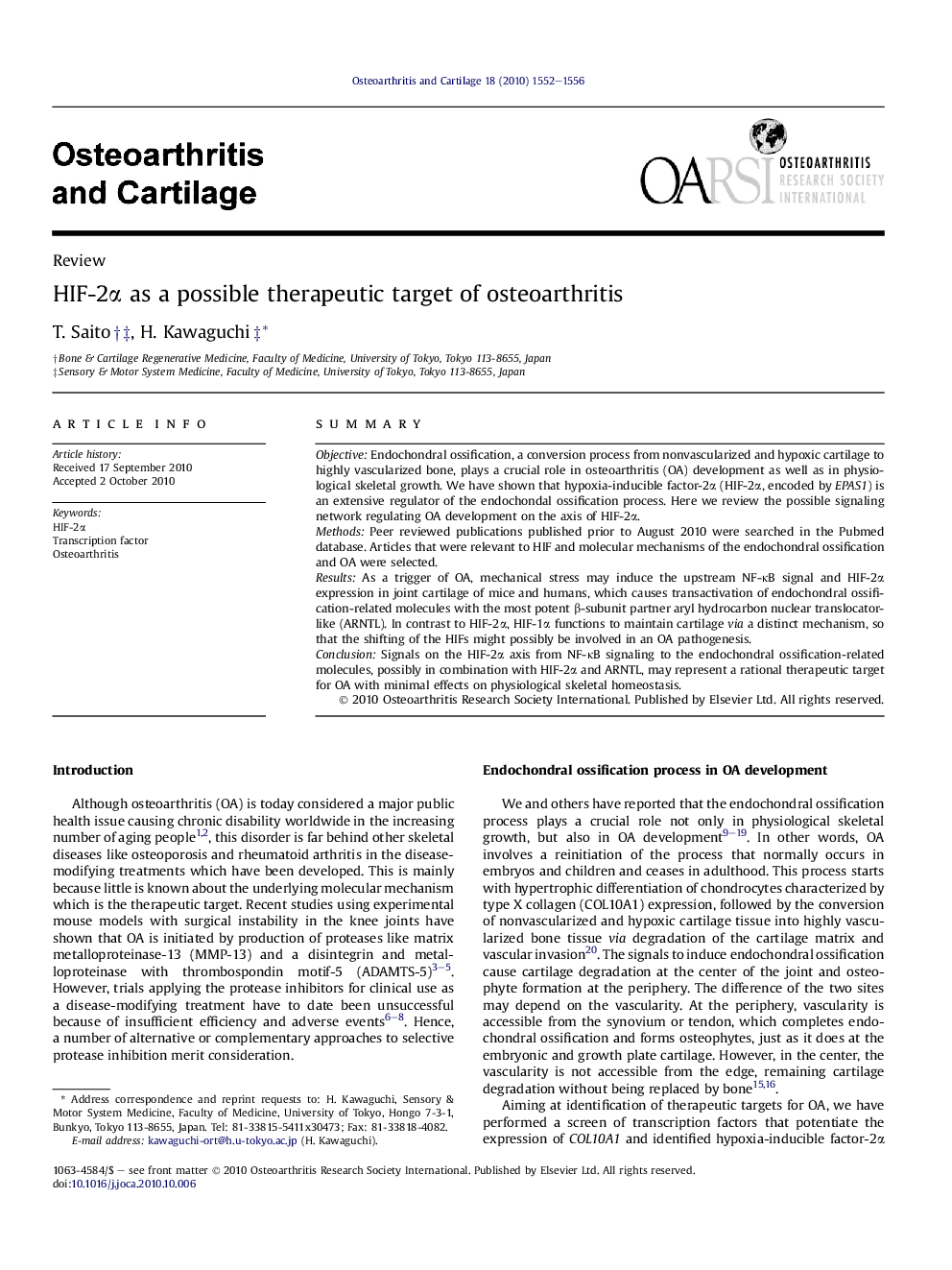| کد مقاله | کد نشریه | سال انتشار | مقاله انگلیسی | نسخه تمام متن |
|---|---|---|---|---|
| 3380940 | 1220228 | 2010 | 5 صفحه PDF | دانلود رایگان |

SummaryObjectiveEndochondral ossification, a conversion process from nonvascularized and hypoxic cartilage to highly vascularized bone, plays a crucial role in osteoarthritis (OA) development as well as in physiological skeletal growth. We have shown that hypoxia-inducible factor-2α (HIF-2α, encoded by EPAS1) is an extensive regulator of the endochondal ossification process. Here we review the possible signaling network regulating OA development on the axis of HIF-2α.MethodsPeer reviewed publications published prior to August 2010 were searched in the Pubmed database. Articles that were relevant to HIF and molecular mechanisms of the endochondral ossification and OA were selected.ResultsAs a trigger of OA, mechanical stress may induce the upstream NF-κB signal and HIF-2α expression in joint cartilage of mice and humans, which causes transactivation of endochondral ossification-related molecules with the most potent β-subunit partner aryl hydrocarbon nuclear translocator-like (ARNTL). In contrast to HIF-2α, HIF-1α functions to maintain cartilage via a distinct mechanism, so that the shifting of the HIFs might possibly be involved in an OA pathogenesis.ConclusionSignals on the HIF-2α axis from NF-κB signaling to the endochondral ossification-related molecules, possibly in combination with HIF-2α and ARNTL, may represent a rational therapeutic target for OA with minimal effects on physiological skeletal homeostasis.
Journal: Osteoarthritis and Cartilage - Volume 18, Issue 12, December 2010, Pages 1552–1556